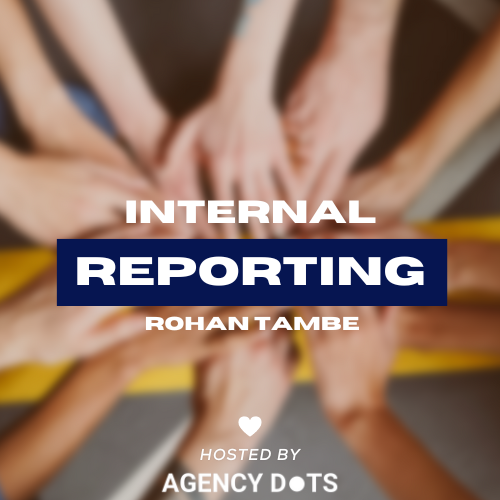The importance of aligning stakeholders with internal reporting
Rohan Tambe is an experienced project manager who worked in different industries. In this interview, we will talk about why is important to align stakeholders with reporting to deliver a project successfully.

What is the importance of internal reporting in a project?
We can understand internal reporting by considering the audience involved, directly or indirectly with the project.
In projects I’ve managed, there are usually 3 types of teams. These include direct teams, who execute the project, the internal stakeholders who are responsible for the smooth execution of the project, and the upper management who are responsible for the ROI of a project. Since there are several people with different responsibilities working on a project, there must always be transparency.
As a project manager, if you decide to provide only verbal or descriptive reports to the different stakeholders, it will be chaotic because a single report may be irrelevant to all parties. For example, upper management is not involved in day-to-day activities; they are more interested in the milestones of the project, budget, or performance reports. Meanwhile, the direct teams would like to receive frequent updates on progress and feedback from clients.
This scenario shows how important it is to have tailored reports for different audiences. Taking this approach helps the various stakeholders make informed decisions and hold them accountable.
Do you want to know how many hours you are spending in manual reporting? Calculate it here.
What should be included in an internal report?
The reports usually highlight areas in the project that need attention and contribute to the early detection of small issues that could escalate into major roadblocks. Internal reports can also be repurposed and refined for communication with external stakeholders. This helps to align both internal and external stakeholders.
There is no specific format for creating an internal report, however, the primary goal is to ensure the report is helpful in decision-making. A report should include the below sections but should not be limited to them.
- Report Title
- The date on which the report is released with any revisions to refer to any backdated version
- Audience for whom the report is intended and the creator of the report
- The purpose of the report, which is the objective for creating a report
- Body (This can include consolidated information about the Report like charts, and bullet points)
- Report Summary
- Current Status including the detailed information for which the report is created
- Key Metrics that are impacting the project
- Risks and Issues (if any)
- Conclusion based on the body
- Next Steps and Recommendations
How did you ensure the reports were actionable for all stakeholders involved?
For any report to be actionable it must be concise. For example, when working on a report for the team executing the project, three main things should be included; a summary of tasks completed, upcoming tasks with resource allocation, and a highlight of feedback or blockers. These 3 points will give a basic insight into what’s been completed, what’s pending, and where the team needs support. Each individual will then know what to focus on.
Reports should also include timelines or deadlines for action. For example, having changes in the project scope and not providing details to senior management on time for approval will significantly impact the project. Some of these impacts include delays in project timelines resulting in reduced project quality which ultimately leads to damaged client relations because of all the delays.
In my personal experience, I worked with a client who was unable to decide on a payment gateway to finalize their e-commerce website during the start of the project. Although the payment gateway was not a blocker to starting the project, my team and I identified that it would turn into one in the later stages of the project. To avoid this, we started by informing the management team of the situation. With the support of the management team, we were able to introduce the client to reliable payment partners, prepare a pros and cons report, and provide recommendations on the best-fit solution for the client. This process helped the client make an informed decision and prevented us from having a blocker in the project.
How do you balance the need for detailed reporting with the risk of overwhelming stakeholders with too much information?
Having a process to build a report template that can be used to prepare reports repeatedly is a time saver.
Two approaches can be used in generating reports. The first is top to bottom and the second is bottom to top.
I prefer the bottom-to-top method because it provides me with lots of insights from the stakeholders working directly on the project and their requirements in terms of the reporting matrix. As I start preparing these reports the decisions or outputs formed from these reports will ultimately become the base of the report required for the next level of stakeholder. This ensures you provide only the required information to the respective stakeholders and in case a detailed report is needed you already have a relation built up between other reports which can be provided on request with a faster turnaround time.
Try AgencyDots for free!
Control your entire project portfolio from one place.
Make your software development agency efficient.
No credit card required.

